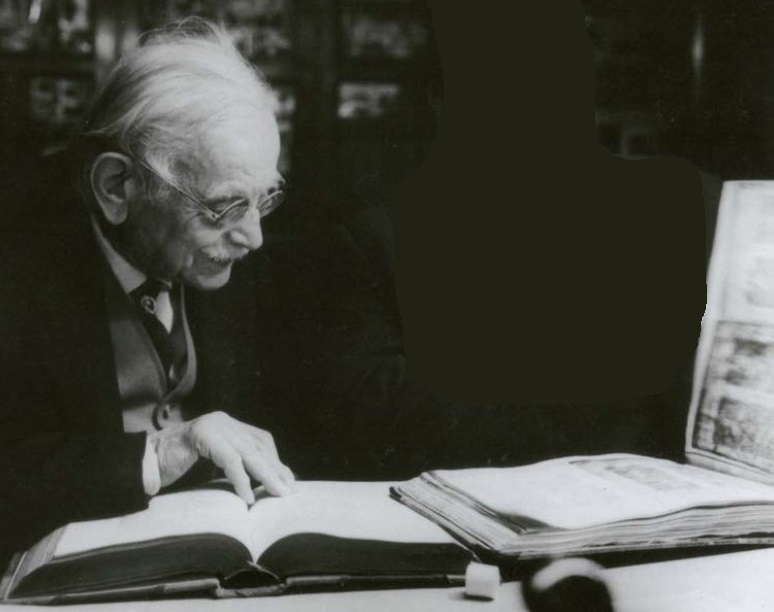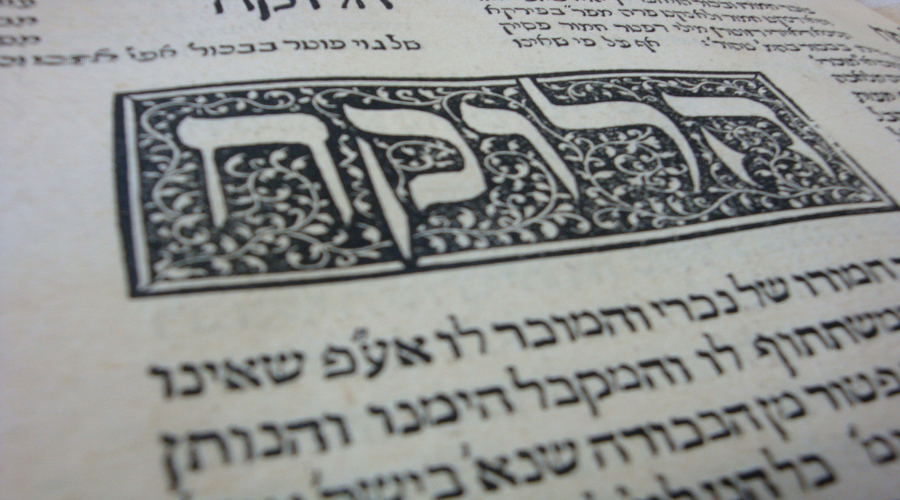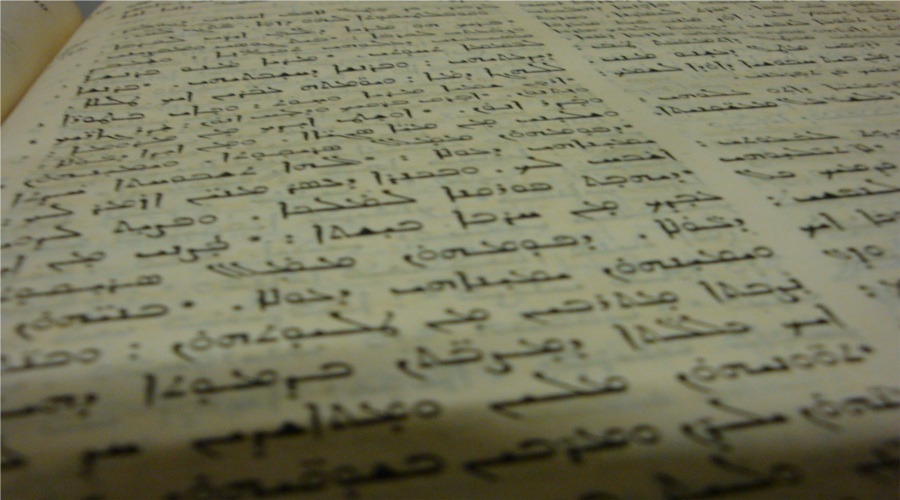About

The Paul Kahle fonds is made up of the books and papers produced by the activities of Paul Ernst Kahle (1875-1964). The fonds was purchased by the University of Turin in 1966. Above all, thanks to the vast range of sectors of research touched upon, the fonds constitutes a point of reference for orientalists worldwide.
A considerable part of the collection ("Archive" section of the database) is made up of papers, manuscripts and typescripts concerning all the research activities undertaken by Paul Kahle. Among the key items, we may cite Kahle's studies dedicated to the Hebrew Bible, as well as his study of literary, historic and geographic sources in Arabic, Turkish and Persian. The preparatory materials have been preserved (notes, studies, copies and/or reproductions of manuscripts), as well as all the documentation produced during the various stages of work on publications (manuscript and typescript drafts, intermediary stages of elaboration and revision of texts, through to final publication). This is the author's true archive in which we find, layer upon layer, the scientific works of a major twentieth–century orientalist.
The structure of the archive has been designed in such a manner as to reflect the articulation of Paul Kahle's studies. Practically all the sectors in which Kahle conducted his studies and/or published have left traces in the archive or library. Readers may refer to the introductions for the series and sub–series of the archive for more in–depth information on these sectors of scholarly research.
Together with the documentation relative to the various stages of scholarly production, and as a logical supplement to that documentation, we may note the large section dedicated to correspondence. Here, we find the letters received by Paul Kahle from more than 2,500 correspondents, and, in many cases, the drafts of the letters which he sent to these correspondents. Among his correspondents, we also find many leading scholars and personages from the world of oriental studies, such as the orientalist, Helmut Ritter, the Bible scholar, Matthew Black, and the Coptologist, Aziz Atiya.
The "Correspondence" section of the database thus presents a web or network of intellectual exchanges which formed around Kahle and which bolstered his scholarly efforts. The correspondence reveals that the wealth of data represented by this archive, and Kahle’s standing as a scholar, are the fruit not only of private, individual commitment but also of exchanges within the milieu of the intellectuals of his times.
The archive also preserves graphic materials and other materials in the form of photographs, microfilm and photographic plates. We also note the presence of the corporate fonds of Georg Jacob, of four of Paul Kahle’s five sons (Wilhelm, Hans, Theodor, Paul jr), and of Paul’s wife, Marie Gisevius Kahle.
The book collection consists in about 11,000 printed works (monographs, excerpts and periodicals) and 300 manuscripts. The collection of Islamic manuscripts (280 manuscripts: "Manuscripts" section of the database) includes an analytic presentation in the hard copy catalogue produced by Roberto Tottoli, Maria Luisa Russo and Michele Bernardini; the database provides the essential information on each manuscript.
The many documents left by Paul Kahle inside the books have been examined and described as part of the work on the archive. These papers – which have been physically left inside the volumes in order to maintain the ties, characterising this private archive, between books and documents – have been assigned to the "Documents preserved inside books" section of the database.

Paul Ernst Kahle was one of the most important orientalists of the twentieth century. Born in Hohestein (Eastern Prussia) in 1875, he studied theology and oriental studies in Marburg and Halle.
In 1903, after obtaining his PhD, and after conducting further research on Hebrew, Samaritan, Arabic and Syriac manuscripts in Berlin, London, Oxford and Cambridge, Kahle moved to Cairo, where he remained until 1908 as pastor and director of the Deutsche Evangelische Oberschule.
The stay in Egypt was highly significant for Kahle's scientific training since he collected considerable amounts of material – manuscripts, notes, photographs – on various subjects and, in particular, on the shadow play (materials which he would then use for in–depth studies which he published, at least in part, over the following years). The time of his stay in Egypt was also a period during which he repeatedly travelled to Palestine, where he gathered yet more study materials, in particular on the Holy Places of Islam and on the Palestinian Bīr Zēt dialect, and also a number of Samaritan manuscripts.
Following his return to Germany, Kahle taught at the university in Halle (1909-1914), and received a professorial appointment in Giessen in 1914. He married Marie Gisevius in 1917.
In 1923, he moved to Bonn, where he was appointed director of the Oriental Department of the University and secretary of the Deutsche Morgenländischen Gesellschaft (DMG).
The tragic events of the years of Nazism also had serious consequences for Paul Kahle and his family. In November 1938, following the Kristallnacht, Paul Kahle's wife and eldest son aided a Jewish shopkeeper from Bonn. As a result of this, Paul Kahle was faced with constant persecution and intimidation, as a result of which he lost his post at the University. In 1939, rejoining his wife and five sons (Wilhelm, Hans, Theodor, Paul jr and Ernst), he took refuge in England.
In England, Kahle worked on the catalogue of Islamic manuscripts at the Chester Beatty library. In 1941, he was asked to give a series of lectures at the British Academy. These lessons formed the basis of his major work, on the Cairo Geniza.
Only after World War II was it possible for Kahle once more to take possession of his library. He was then appointed Professor emeritus of the University of Bonn. He died in Düsseldorf in 1964.

Paul Kahle's scientific archive, held at Turin, reflects this scholar's many interests in the field of oriental languages and cultures. Practically all the sectors in which Kahle conducted his studies and/or published have left traces in the archive or library, and the structure of the Turin archive has been designed in such a manner as to reflect the articulation of these studies. Readers may refer to the introductions for the various series of the archive for more in-depth information on this research.
One of the most important works by Paul Kahle concerns the Hebrew Bible, which was examined from the angle of the history and tradition of the text, the language and various editions. Together with Rudolf Kittel, he published the text of the Hebrew Bible, producing the so called "Kittel-Kahle" version of the Biblia Hebraica Stuttgartensia, based on the manuscript of St Petersburg (Leningradensis B19a). He worked on the Masoretic text of the Hebrew Bible, and his studies into the Masoretic schools included two famous publications, Masoreten des Ostens and Masoreten des Westens.
One of the Paul Kahle's most important publications is The Cairo Geniza, a work which received considerable critical acclaim and which was published twice in English (1947, 1959) and once in German (1962). Paul Kahle also undertook many studies into vocalization, accentuation and pointing systems in Jewish manuscripts. While many of these studies concentrated on manuscripts with Babylonian pointing, we should also note his works on Palestinian pointing. Within this ambit, we should also note publication of the essay, The Mishna Text in Babylonia, written in part in collaboration with Yehiel Weinberg.
Paul Kahle also focussed on the Septuaginta version and Origen's Hexapla, Samaritan literature, with particular attention paid to study of the Samaritan Pentateuch, the pertaining Targum and Samaritan liturgy, the Qumran fragments and the Targum (we find many notes by Kahle on the interpretations of the various Targumim, in particular, Onkelos).

In regard to the field of Islamic studies, Paul Kahle studied various aspects, ranging from study of literary sources to study of historical and geographic sources. His interests took him beyond Arabic text; he also studied much material in Turkish and Persian, mostly from the post-classic period (12th-19th C.).
The studies dedicated to the history of the shadow play, and publication of Ibn Dāniyāl, are, even today, Kahle’s major contribution to the study of Arabic literature. Over the years, Kahle published important articles on specific aspects of the history of the shadow play, on the shadow play’s diffusion during the Mamluk period in Egypt, and on the figures and certain characters, as well as the language of the texts. His studies of anonymous "games", such as Li‘b al-Timsāḥ and Li‘b al-Manār are of particular interest.
Historiography was another important field of research. With Muḥammad Muṣṭafā, Kahle published three volumes of one of the most important historical chronicles of the Mamluk period, the Kitāb Badā’i ‘ al-Zuhūr fī Waqā’i ʻ al-Duhūr by Ibn Iyās (Leipzig 1931, 1932, 1935). Relating to this period of history are the studies dedicated to the city of Alexandria and to its lighthouse. His articles on the Ǧāmi‘ al-tawāriḫ by the Persian historian, Rašīd al-Dīn, remain unpublished to this day.
Turkish-Ottoman geography was one of the fields of research dearest to Paul Kahle during the years of his early career. Of particular importance are the edition of the Kitāb-i Baḥriyye by Pīrī Re’īs (Bahrije. Das türkische Segelhandbuch für das Mittelländisch Meer Vom Jahre 1521, 1926) and the various works on Pīrī Re’īs’ map (including Die verschollene Columbuskarte von 1498 in einer türkischen Weltkarte von 1513, 1933). Various studies concerning China and Chinese porcelains, conducted on the basis of the works of Arabic, Persian and Turkish historians and geographers, also regard this historic period.
A number of Arabic dialectology and folklore studies came out of the important field research conducted by Kahle in Egypt and Palestine during the earlier years of his career. In collaboration with Hans Schmidt, Kahle published Volkserzählungen aus Palästina (2 vols., 1918-1930), a collection of stories from the village of Bīr Zēt. We note his important articles on the cult of the saints and on sanctuaries in Palestine (1910-1913), as well as research into the rituals of the zār (1912) and into lamentations over the dead (1923) in Egypt.
In regard to Koranic studies, his work on the language and readers of the Koran and the pertaining chapters in The Cairo Geniza (publ. 1947; 1959; 1962) are still of interest today.
Mineralogy was a further marginal interest cultivated by Paul Kahle, through study of the work of al-Bīrūnī. Another field of this kind was medicine, with analysis of certain aspects of the work of Ibn Samağūn and Ibn Maymūn (Maimonides).
Lastly, we must also mention his considerable cataloguing work concerning the manuscripts now at the Chester Beatty Library in Dublin.